NYC’s Forgotten ‘War on Christmas Trees’
Discover how an obscure holiday crackdown affects festive street vendors today!


Before it experienced a period of industrialization, New York City was full of lush greenery and bucolic treasures. Though the city is filled with more buildings and paved streets than it had in the past, there are still some hidden gardens and green spaces tucked in around the five boroughs. Here are the top ten hidden gardens to get away from the hustle and bustle of New York City.
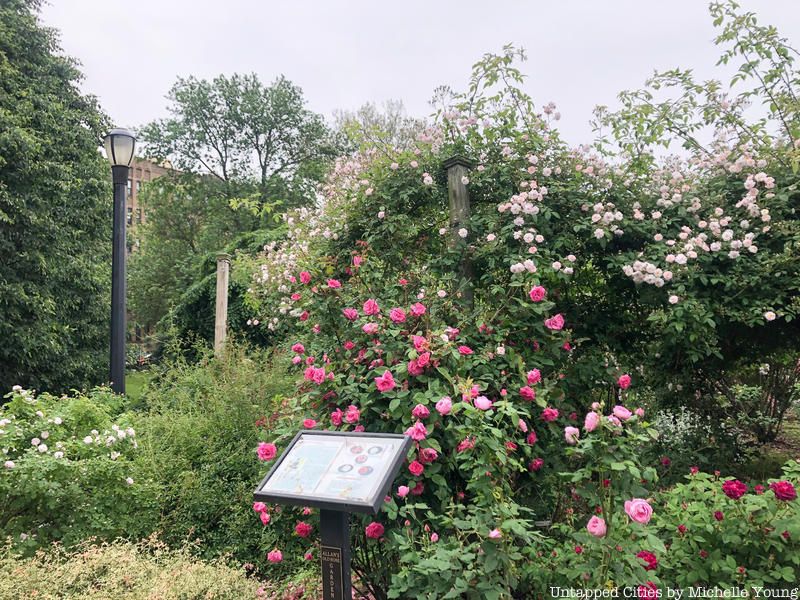
Brooklyn is one of the fastest developing boroughs in New York City. But before the trendy restaurants and influx of people moving in, the Narrows Botanical Garden opened up as a green space for residents to enjoy. In 1995, the “jewel of Bay Ridge” was founded by James Johnson, a landscape designer, and Joan Regan. The two gained a number of volunteers to help cultivate the garden, including Richard Haugland, the principal gardener of City Hall Park. Haugland was involved in a number of the garden’s projects, like the pollinating garden and the city’s only outdoor cactus garden. The garden has received a number of accolades in its 21 years of existence. In 2013, Condé Nast Traveler named it one of the top five gardens to visit in New York City, and in 2015, the Narrows was listed as one of the top 15 botanical gardens in New York State.
According to its website, the goal of the garden is to “educate and inform the community about the natural world” and “foster knowledge and interest about plants and animals.” The Narrows offers a number of activities including an annual spring plant event, a fall harvest festival and movie nights.
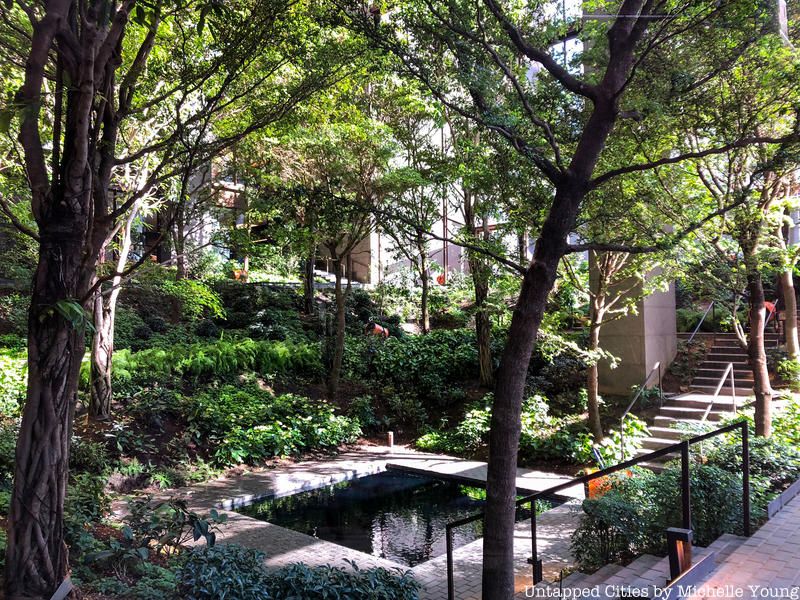
Tucked away inside the Ford Foundation Building in Midtown Manhattan is a gem of a garden that serves as a green oasis in the middle of the city. In 1967 the Ford Foundation Building and the Ford Foundation Atrium Garden were completed and in 1997, the building was designated a national landmark. A unique feature about the garden that we previously wrote about is that its maintenance doesn’t deplete from the city’s resources. Instead, the Ford Foundation’s roof captures the rainwater for the garden, and a reserve source of water is used during dry periods.
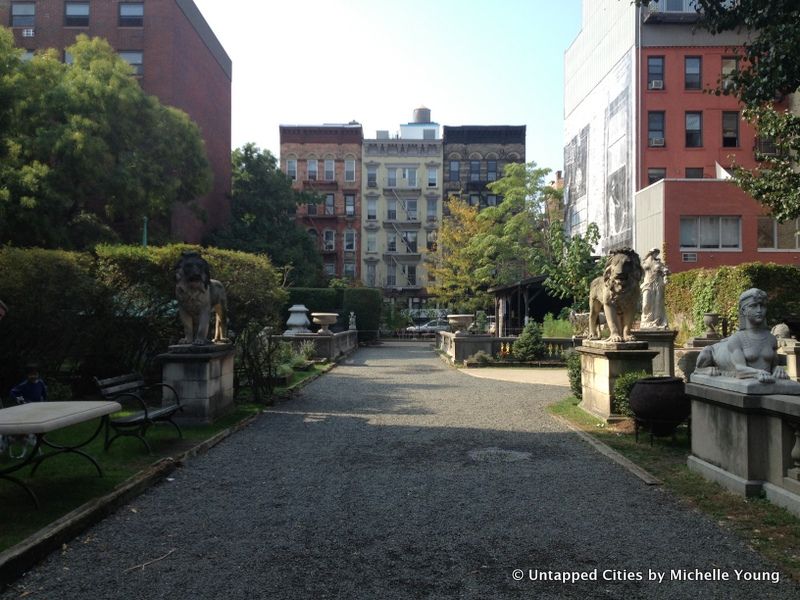
When the term “green space” is used in relation to New York City, Soho isn’t the first place that comes to mind. Which is why the Elizabeth Street Garden, located between Prince and Spring Streets, is a 20,000 square foot garden that is one of the neighborhood’s best kept secrets. As Untapped Cities previously wrote about, the garden has been in danger of closing for years, but neighborhood advocates and allies have rallied to keep the garden alive. They argue that the garden is the “only calm green space, providing a much-needed sanctuary for local residents of all ages.” The garden is open daily from 10 am to 6 pm and there are a variety of activities offered, including community gardening, yoga for kids, tai chi and live music.
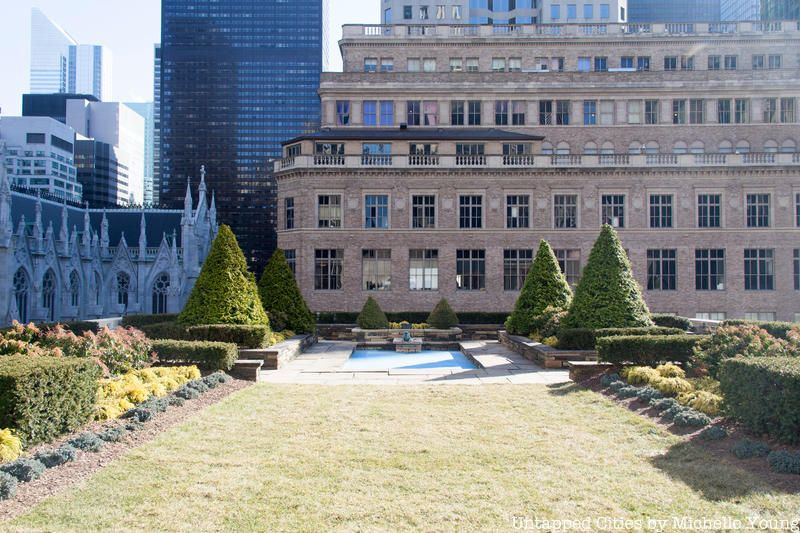
Rockefeller Center is known for its ice skating rink, plaza and observation deck, to name a few things. But atop some of the buildings at Rockefeller Center are beautifully manicured hidden gardens that few people are aware of. The gardens are part of an indoor/outdoor space known as 620 Loft and Garden, which offers great views of Saint Patrick’s Cathedral and other buildings on Fifth Avenue. As Untapped Cities previously reported, this idyllic space was also a film location for the original ‘Spiderman’ movie.
Some of the features of this rooftop gem include the outdoor garden, a reflective pool and fountain and enough space to accommodate wedding receptions of up to 165 people.
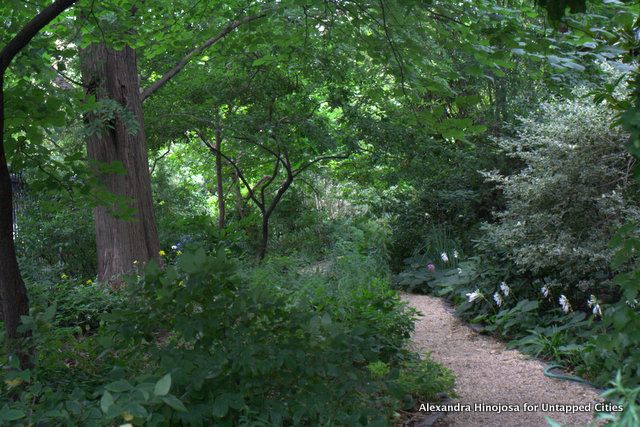
On the northeast corner of Bowery and Houston Streets in Manhattan is the Liz Christy Garden, billed as “the first community garden in New York City.” According to the garden’s website, it was founded in 1973 by a local resident named Liz Christy and a garden activist group called the Green Guerillas. During that time, Christy and the garden activists planted trees in vacant lots and grew plants in window boxes around the area. They stumbled across the then-vacant lot and saw an opportunity to create a green space in the area. They went to the city to gain official access to the patch of land, and by December, volunteers cleared out the rubble, installed a fence and began planting.
The city’s office of Housing Preservation and Development approved the garden for $1 rent in April 1974 and it was called the Bowery Houston Community Farm and Garden. In 1986 the garden was dedicated as the Liz Christy Garden in memory of its founder. There were efforts by the Cooper Square Committee in 1990 and New York State and the Attorney General in 2002 to preserve the garden in the midst of urban development. Today, the garden spans over one acre of land and has a pond, a variety of trees, gardens with vegetables, berries, herbs and perennials.
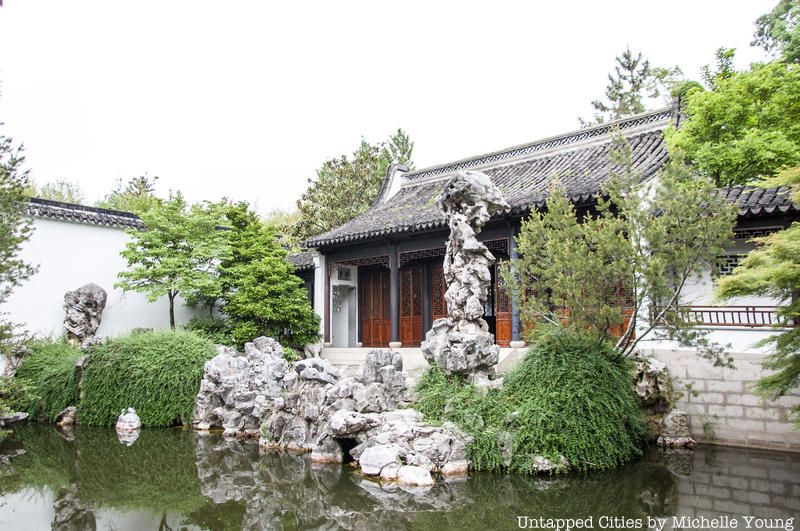
Snug Harbor is home to a piece of Chinese culture known as the New York Chinese Scholar’s Garden. In 1999, the garden was created as an addition to the larger Staten Island Botanical Garden and used materials shipped from China the year before. It was designed by 40 artists and artisans from Suzhou, led by chief project designer Zou Gongwu. According to the garden’s website, it is a compilation of different gardens and inspired by traditional Chinese Gardens of the Ming Dynasty. The garden’s highlights include eight pavilions, waterfalls, a Koi pond, Chinese calligraphy and Ghongshi scholar’s rocks.
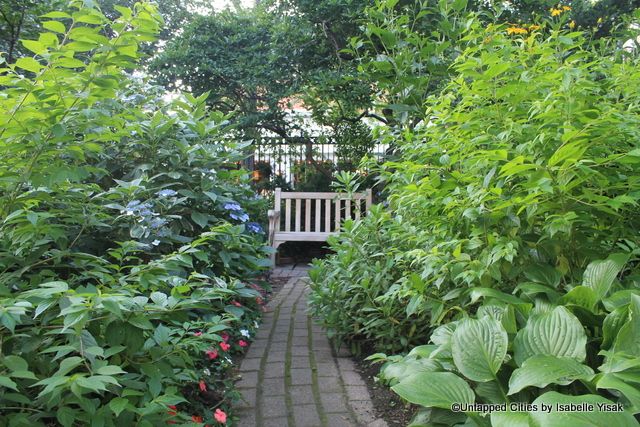
This Greenwich Village garden was opened in the spring of 1975, but prior to that, the area in which the garden is located has had a long and colorful history. According to the website, the Jefferson Market was leveled in 1873 to make room for the new courthouse that was to be built there. The courthouse was designed by Calvert Vaux.
The area where the women’s prison used to be was converted into the current Jefferson Market Garden in 1975 by a committee of local Village residents. Currently the garden hosts events including free concerts, art exhibitions, garden parties and harvest festivals.

As its name suggests, the 6BC Botanical Garden is located on 6th Avenue between Avenues B and C in the East Village. But according to its website, the B stands for “botanical,” where people come to learn, while the C stands for “community” since it also functions as a community garden. The garden is “designed, planted and maintained by local volunteers in association with GreenThumb,” a community gardening program run by the New York City Department of Parks and Recreation. According to its website, 6BC was founded in 1981, and has grown from a simple community garden to an organization dedicated to “horticultural education” and promoting biodiversity.
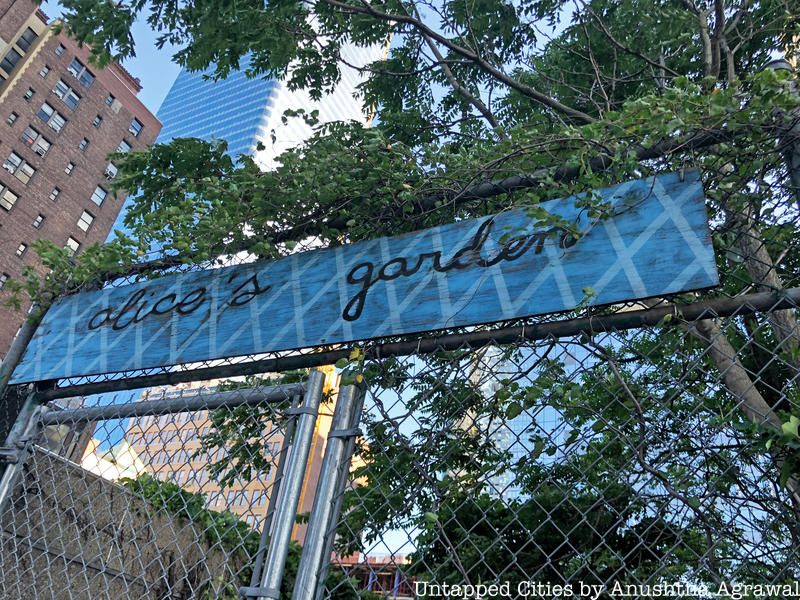
Alice’s Garden is located on West 34th Street between 9th and 10th Avenues. The garden’s namesake was a woman named Alice Parsekian, who according to the garden’s web page, cared for the garden until her death in 2010. Parsekian was born in Armenia and moved to the Bronx and eventually to the Webster Women’s Residence on West 34th Street. After her death, the garden was revitalized in 2011 as part of a joint effort by CultivateHKNY, the Hell’s Kitchen Neighborhood Association, Clinton Housing Development Company, Manhattan Community Board 4 and the Port Authority of NY and NJ. CultivateHKNY is responsible for maintaining a number of gardens and green spaces around Hell’s Kitchen including Adam’s Garden, the Children’s Garden, Bob’s Park and Juan Alonso Community Garden and Park.
There are 20 community member plots and two common areas in Alice’s Garden maintained by members of the community, gardeners and YAI’s day program.

During her lifetime, Enid A. Haupt was a philanthropist and supporter of all thing related to horticulture and the arts, as evidenced by her biggest contribution, the New York Botanical Garden. Another one of her numerous contributions to New York City is the Enid A. Haupt Glass Garden. According to the Rusk Institute, which is associated with the NYU School of Medicine, this garden was built for the purpose of offering patients a place to relax to escape the “rigors and clinical environment of their physical rehabilitation treatment.” Today, the garden is used as a center for important horticultural research, but the public botanic garden is still used for its original purpose.
Next check out 10 Under the Radar NYC Waterfront Parks Across the 5 Boroughs, The Top 10 Secrets of the New York Botanical Garden and Top 10 Secrets of the Brooklyn Botanic Garden in NYC. Contact the author @jen_bagcal.
Subscribe to our newsletter